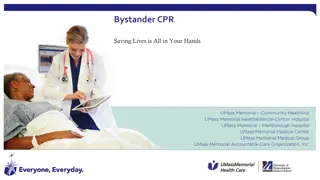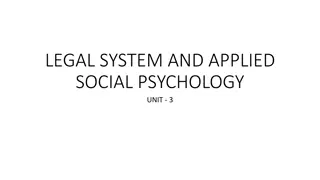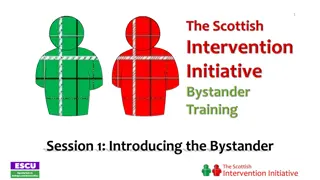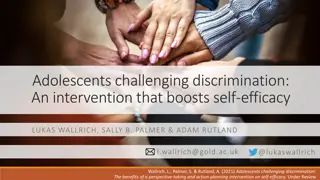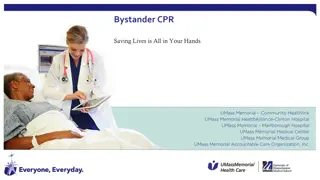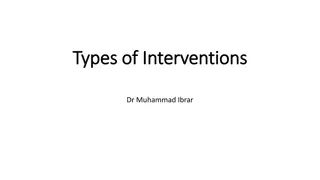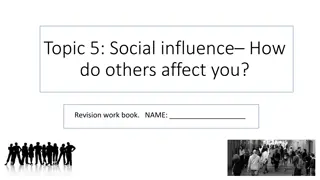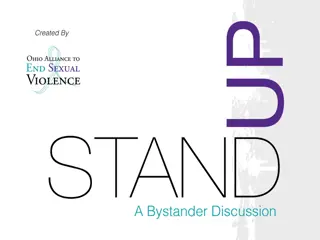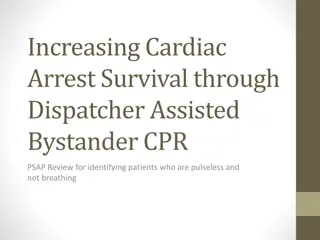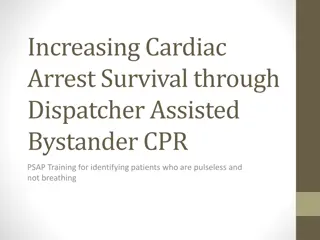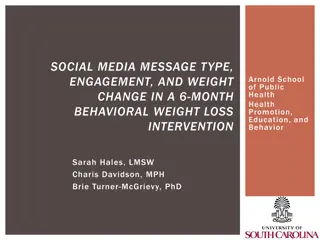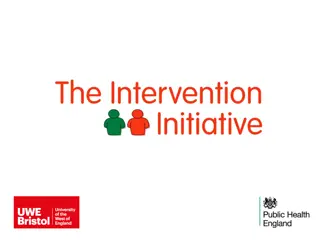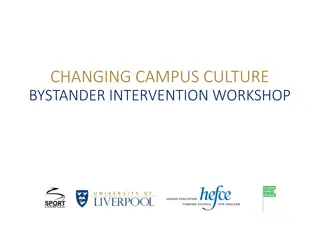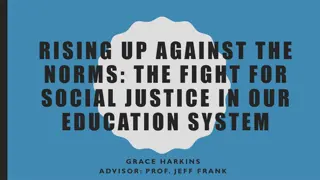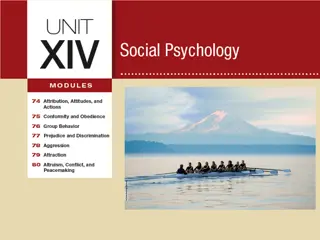Bystander Intervention in Social Norms Discussion
Explore the dynamics of bystander intervention in social norms discussions, highlighting the importance of noticing, interpreting, feeling responsible, and possessing necessary skills to act. Learn through real-life scenarios and discussion questions to understand when and how intervention can occur effectively, supported by various strategies outlined for interventions in different situations.
Download Presentation

Please find below an Image/Link to download the presentation.
The content on the website is provided AS IS for your information and personal use only. It may not be sold, licensed, or shared on other websites without obtaining consent from the author.If you encounter any issues during the download, it is possible that the publisher has removed the file from their server.
You are allowed to download the files provided on this website for personal or commercial use, subject to the condition that they are used lawfully. All files are the property of their respective owners.
The content on the website is provided AS IS for your information and personal use only. It may not be sold, licensed, or shared on other websites without obtaining consent from the author.
E N D
Presentation Transcript
Session 5 Social Norms and Bystander Intervention
We will be learning and working together as a group in this programme Some of the material we will be discussing will be sensitive and some of us will have had personal experience of the things we discuss We will all be be respectful of personal emotions as we learn Some ground rules Confidentiality Appropriate language Attendance Communicating with the facilitator Please be aware that we will be talking about sensitive issues and issues that might have affected you or people you care about. If you feel uncomfortable or upset it is fine to leave the space. Facilitators will understand and are trained to help you.
4 Stages for intervention 1. Notice the event 2. Interpret it as a problem 3. Feel responsible for dealing with it 4. Possess necessary skills to act Adapted from Berkowitz, A. (2009) Response Ability: A Complete Guide to Bystander Intervention, Beck & Co., p.10
New Zealand bystander video https://www.youtube.com/watch?v=iUj2OHL AG3w
Discussion questions Who could have intervened to stop this happening? When could they have intervened?
The Flatmate The Best Friend The Bystanders Stranger The Bartender
Bystander Intervention Options Decide to Intervene During the incident Indirect Direct (to the bystander) (to the offender) OR After the incident Confrontation: Assess norm Set limits or express feelings Engage allies & bystanders Change the focus: Make a plan Non-participation Change the subject Develop a support for next step Interrupt / distract Offer support to the victim Change the person/shift attitudes Adapted from Berkowitz, A. (2013). A Grassroots Guide to Fostering Healthy Norms to Reduce Violence in our Communities: Social Norms Toolkit. USA: CDC. Online at http://www.alanberkowitz.com/Social_Norms_Violence_Prevention_Toolkit.pdf
https://www.youtube.com/watch?v=R6- PluWcNwU
Range of Behaviours Healthy, age-appropriate, mutually respectful, safe Mutually flirtatious, playful Situation- or age-inappropriate or non-mutual Harassment Sexually abusive & violent
Golden Rule Only intervene when it is safe for you to do so. If not safe, in an emergency, dial 999
WHEN? DURING AFTER Advantages Advantages Disadvantages Disadvantages Adapted from Berkowitz, A. (2009) Response Ability: A Complete Guide to Bystander Intervention, Beck & Co., chapter 3.
How might you intervene in the moment?
Suggestions Shift the focus Confrontation Interrupt the behaviour (diversion / distraction) Say why it is unacceptable Don t respond Don t laugh or engage Leave Say why it bothers you Raise consequences that the offending person identifies with Deflection changing the subject Reframe change the remark into something positive
Suggestions Ask another person to intervene Shift the person / change attitude Offer help to the victim Confrontation
Confrontation Express interest in offending person Give reasons why you are concerned Share how you/others feel Ask if the offending person understands your point Look at alternative behaviour/ support them in change - I care - I see - I feel - I want - I will Adapted from http://stepupprogram.org/wp- content/uploads/2014/04/Step UP_Intervention_Styles.pdf Adapted from Berkowitz, A. (2009) Response Ability: A Complete Guide to Bystander Intervention, Beck & Co., pp.42-44
Shift the person / change attitude Make them understand why they behave as they do and why their behaviour is problematic so you change their attitude Needs a conversation with respect for all listening is important Identify what is underlying the behaviour Engage in open talk show interest in understanding the person and why they behave as they do Adapted from Berkowitz, A. (2009) Response Ability: A Complete Guide to Bystander Intervention, Beck & Co., pp.47-51






